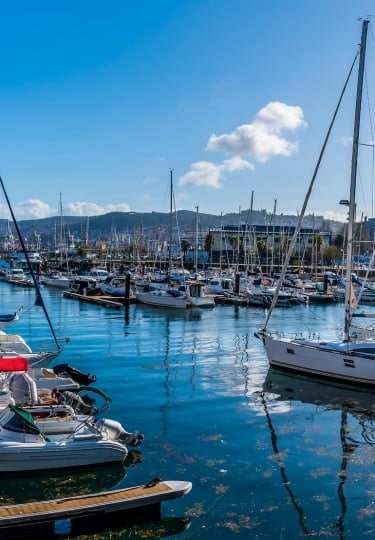Spread along an estuary on the northwest coast in the province of Galicia, close to the Portuguese border, Vigo, Spain is a lively, buzzing city with an atmospheric old quarter and a dynamic cultural scene.
The city is home to the biggest fishing fleet in Europe and is the gateway to some wonderful natural attractions, not least the idyllic Cíes islands, as well as miles of long, sandy beaches, and a hinterland of rolling hills and dense forest.
Thanks to its maritime heritage, Vigo is a city with a deep connection to the sea. You’ll always be able to smell the salty tang of the Atlantic on the breeze, whether you choose to explore the cobbled old center, head for the beach, or while away the afternoon tucking into seafood caught that very morning.
Why Visit Vigo
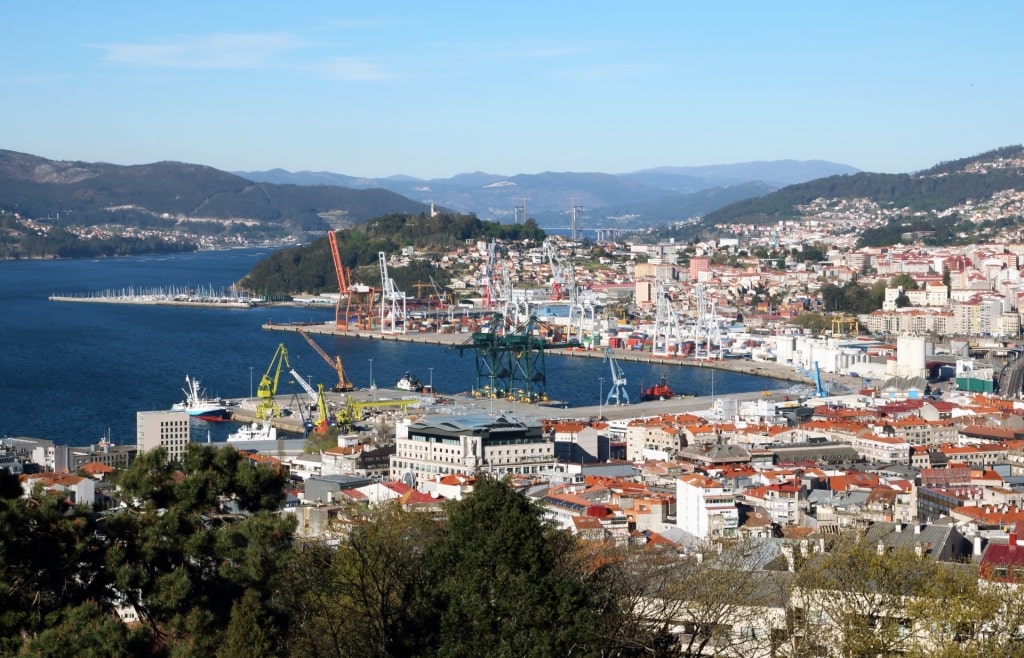
Vigo
Vigo, Spain is often overlooked as a Spanish city worth visiting, perhaps because it doesn’t have the star quality of Barcelona, the dreamy beauty of Seville, or the glamorous setting of Palma de Mallorca.
What Vigo does have, though, is an atmospheric old heart, Casco Vello; a burgeoning art scene; and some of the best seafood in Spain. It’s the city’s authenticity that’s so appealing. Vigo belongs to the locals and has not been overcome by mass tourism.
Vigo is also the gateway to some of Galicia’s most beautiful scenery. You could head out to the granite Cíes islands for a day of basking on a white sand beach or hiking in Spain. The city has its own gorgeous beaches, too, washed by Atlantic surf.
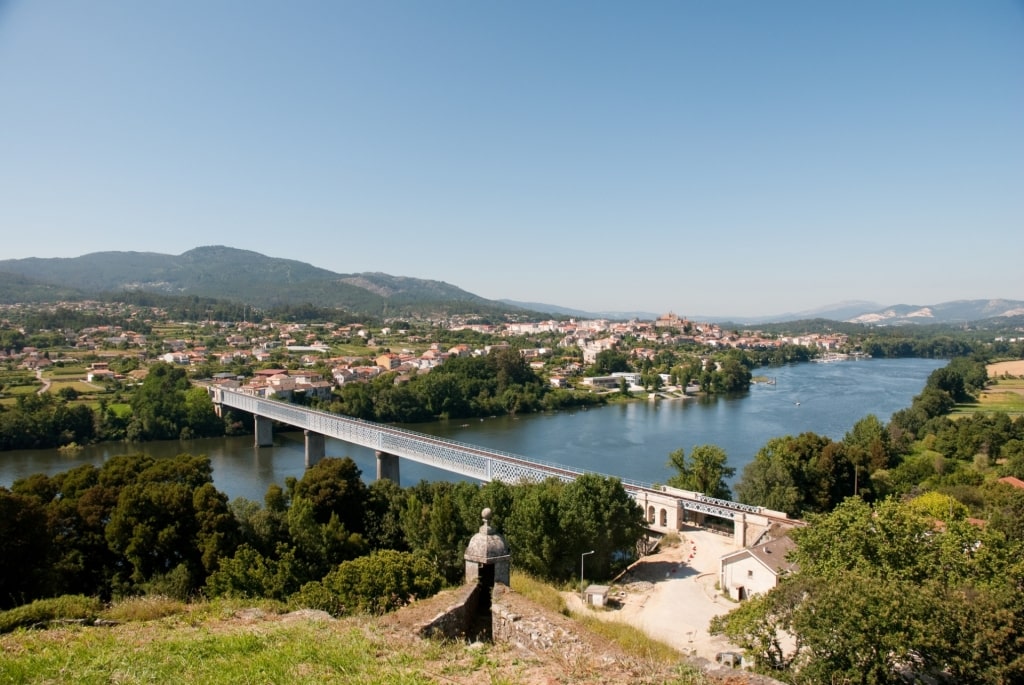
Vigo
Portugal is nearby, and you have a chance to soak up a different culture at the 17th-century town of Valenca do Minho, the other side of the Minho River which forms the border with Spain. And the magnificent old pilgrimage city of Santiago de Compostela is only an hour away.
History & Culture
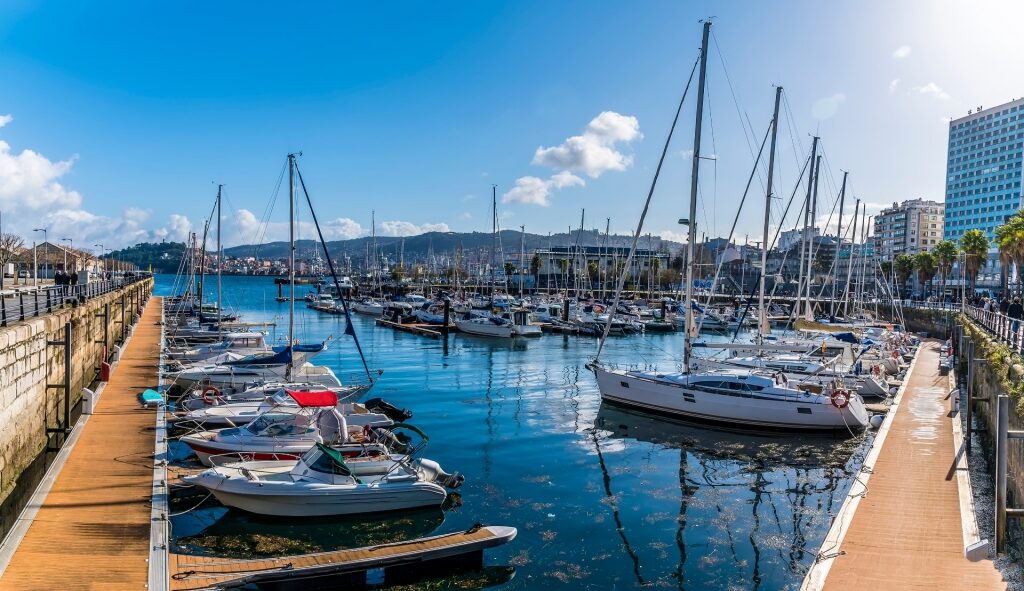
Vigo
Vigo’s history is somewhat scant compared to other Spanish cities. There was a Roman presence here, and a few ruins remain. The port was developed in the 16th century, and Felipe IV of Spain had the castle and defensive walls built as a reaction to two separate attacks by the English admiral, Francis Drake.
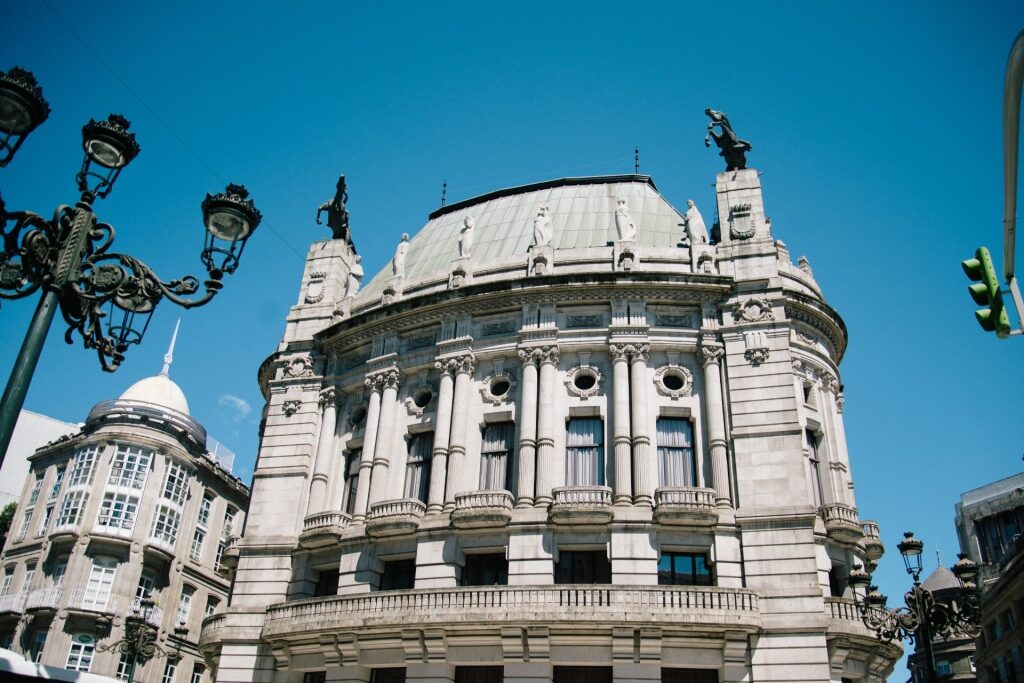
Vigo
The city was briefly occupied by the British during the War of Spanish Succession, from 1701 to 1714, and then later, by the French.
But it was really the arrival of the railways that spurred Vigo into industrialization, with the opening of several sardine canneries. Business was further boosted by Vigo’s status as a tax-free zone, granted in 1947 by the Franco government.
Now, the industrial port area stretches for nearly three miles along the broad estuary of the Ria de Vigo River, and the fishing industry supports more than 30,000 jobs, directly and indirectly.
Vigo is in Galicia, Spain’s green, hilly northwest, so it looks, sounds and feels different from cities such as Barcelona or Malaga. The local language is Galician (Galego), which bears influences of nearby Portugal, although residents speak Castilian Spanish as well.
Like anywhere in Spain, there’s a thriving culinary scene of tapas bars and, given Vigo’s status as a big fishing port, superb seafood. There’s also an edginess here in the contemporary art and alternative music scenes.
Wildlife & Nature

Islas Cíes
To many visitors, Vigo is a jumping-off point for the gorgeous Islas Cíes, part of the larger Atlantic Islands of Galicia National Park and home to some of the best beaches in Spain.
These granite islands are cloaked in pine forest and are home to thousands of gulls as well as petrels, pelicans and raptors. You may see dolphins and sometimes whales in the water during the 40-minute boat ride from the city.
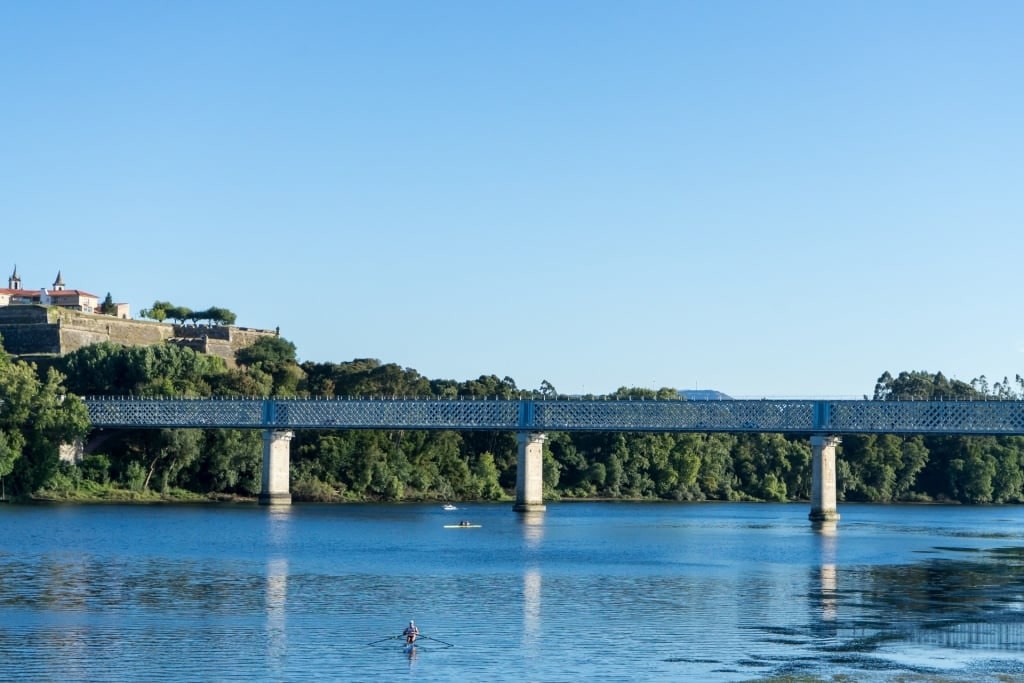
Minho River
There’s plenty of natural beauty inland, too; Galicia is Spain’s greenest corner. You could join a kayak tour along the Minho River, which forms the border between Spain and Portugal. The paddle is suitable for all levels of skill, and drifting past verdant hillsides is a wonderful experience to delve into Spain’s nature.
Tips for Visiting Vigo

Cíes Islands
With limited time, you may have to make a choice: head for the Cíes Islands and their alluring beaches, explore the town, or use Vigo as your base and take a day trip.
You may be influenced by the weather, too. While most of Spain is hot and dry in summer, Vigo and the northwest can be cloudy, misty, and considerably cooler.
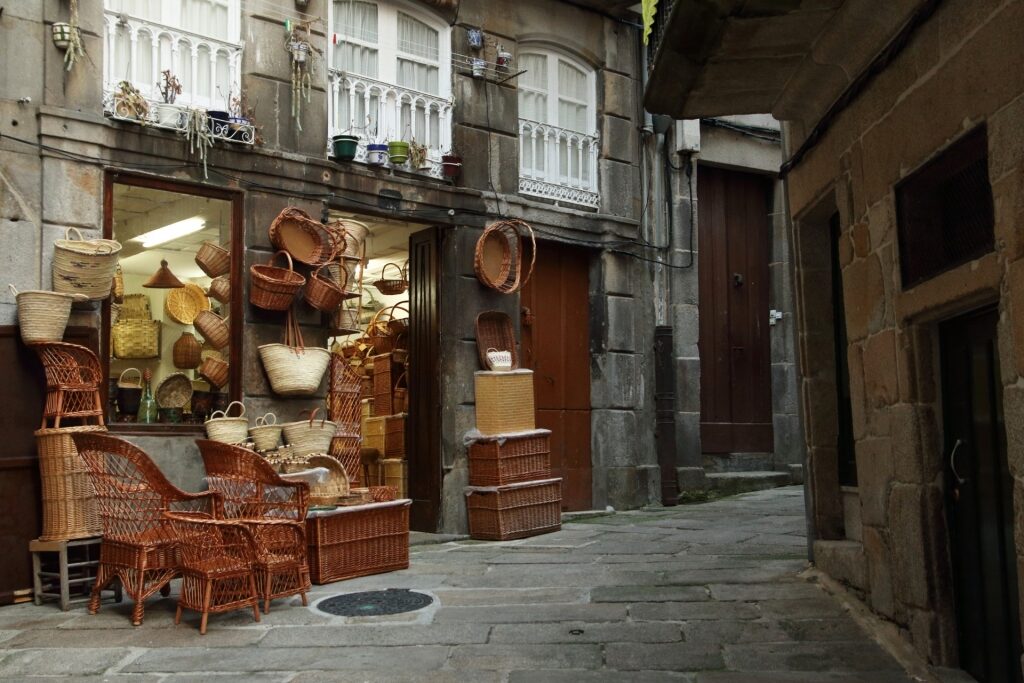
Casco Vello
You can easily walk around the Casco Vello, or Old Town, which spills over a hillside leading down to the port.
There’s a pleasing sense of history here. You’ll find that street names signify the trade that originally took place, from Sombrereiros, home of the hat-makers, to Cesteiros, which was once the center of the basket weaving industry. The area is hilly, though, so wear comfortable shoes.
Things to Do & Attractions in Vigo
Casco Vello
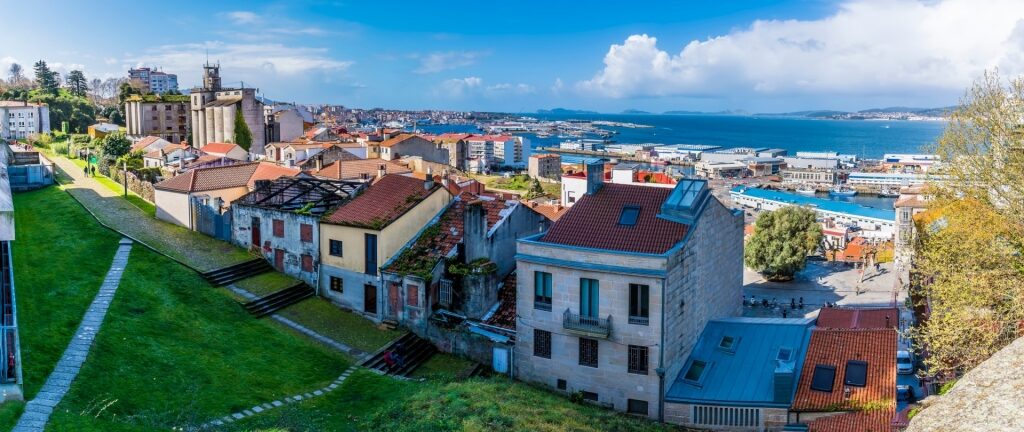
Casco Vello
Vigo’s old quarter rises up from the busy port area in a series of cobbled streets and sleepy squares. Many of the buildings are made from Galician granite, giving the town a stately, if slightly crumbling feel.
Craft has always been an important part of life in Vigo, and you’ll see vestiges of ancient traditions as you wander around. Cesteiros Street was the heart of the basket-weaving industry, creating baskets for storing fish and other foods.
The buildings are still adorned with hand-woven baskets today and make a great photo, or a chance to acquire your own basket.
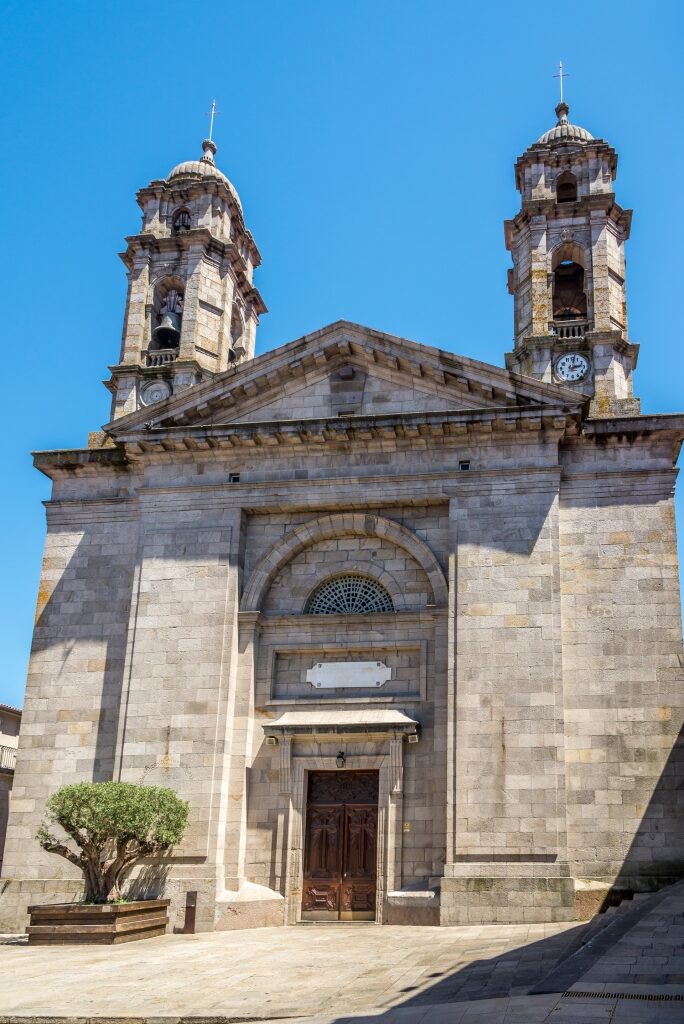
La Colegiata
Stop to look at the cathedral, known locally as La Colegiata, in the heart of the old town. The building is actually not that old compared to many structures in Spain, having been built in 1811 on top of a former church, but it contains some beautiful murals.
Cíes Islands

Cíes Islands
A 40-minute boat ride from the city, this untouched archipelago is one of the most romantic places in Spain. It could have been transplanted from the Caribbean thanks to its white sand beaches, wooded interiors and sapphire-blue sea.
The whole island chain, comprising Monte Agudo, Faro and San Martiño, is a national park, with no development other than a single restaurant on Rodas Beach and a campsite. Daily visitor numbers are capped, so the islands never feel crowded.

Cíes Islands
You can explore on one of the four walking trails through pine-scented forest and up to dramatic viewpoints, although most people just head for the beaches.
The best spots are on the eastern side of the Spanish islands, as the western, ocean-facing sides are pounded by Atlantic waves. While Rodas is the most famous beach, Praia de Figueiras is possibly even lovelier.
Monte de O Castro
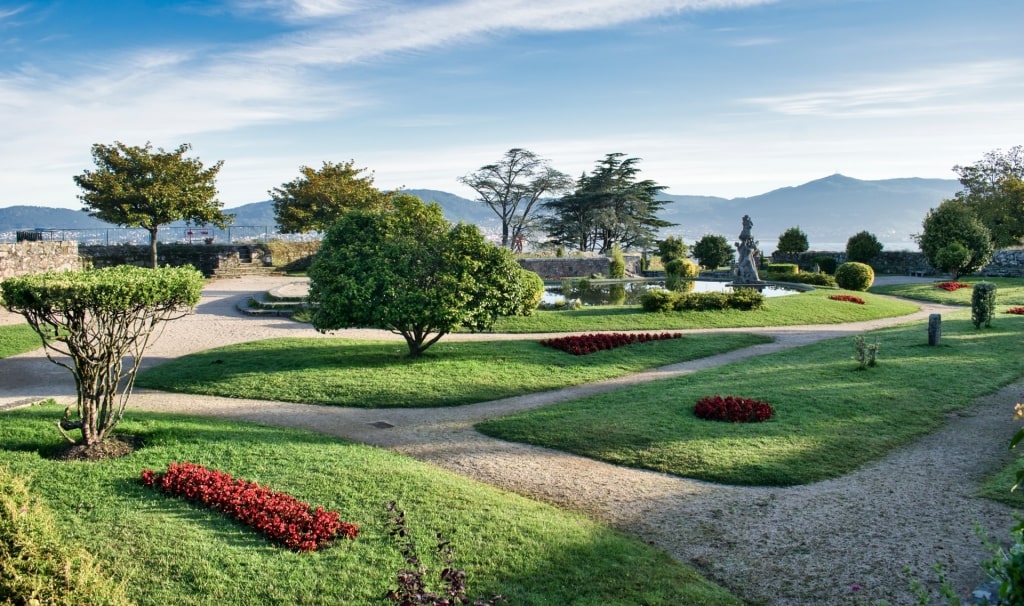
Monte de O Castro
This leafy botanical garden, on a hill in the city center, is overlooked by the Castro, a ruined 17th-century fortress that’s the only remnant of the old city walls.
The park is a series of terraces, pathways, and gardens, with wonderful views from the top over the city, the estuary, and the mountains beyond. It’s a steep climb, though, so take water.
At the bottom of the slope, you’ll see the Castro de Vigo, a cluster of circular, thatched houses. This is a reconstruction of a pre-Roman settlement as it would have looked in the 3rd century BC.
Pazo Quiñones de León

Pazo Quiñones de León
Housed in the Parque de Castrelos, in a stately home dating back to the 17th century, the city’s principal museum displays a fine array of Galician and international art from the 17th to the 20th centuries across 29 different halls.
A separate annex displays the archaeological section, displaying artifacts dating back to the Stone Age.

Pazo Quiñones de León
Just as compelling are the beautiful formal gardens, featuring splashing fountains and manicured lawns. Stroll around the park and you’ll come across the Castrelos Auditorium, a 5,000-seat venue designed along the lines of a Roman amphitheater.
Some of the biggest names in contemporary music have played here, from Leonard Cohen to Oasis and Metallica.
Museu de Arte Contemporánea de Vigo (MARCO)

Museu de Arte Contemporánea de Vigo Photo by Elisardojm2 on Wikimedia Commons, licensed under CC BY-SA 2.0
Vigo has a thriving art scene, and one such example is this contemporary gallery on Rúa do Principe is housed in what was a prison in the 19th century.
There’s no permanent collection. Instead, you’ll find seasonal exhibitions of work by Spanish and international artists, some of them established, others up-and-coming.
Work may take the form of video, sculpture, fashion, architecture, and literature, as well as paintings.
Praia de Samil
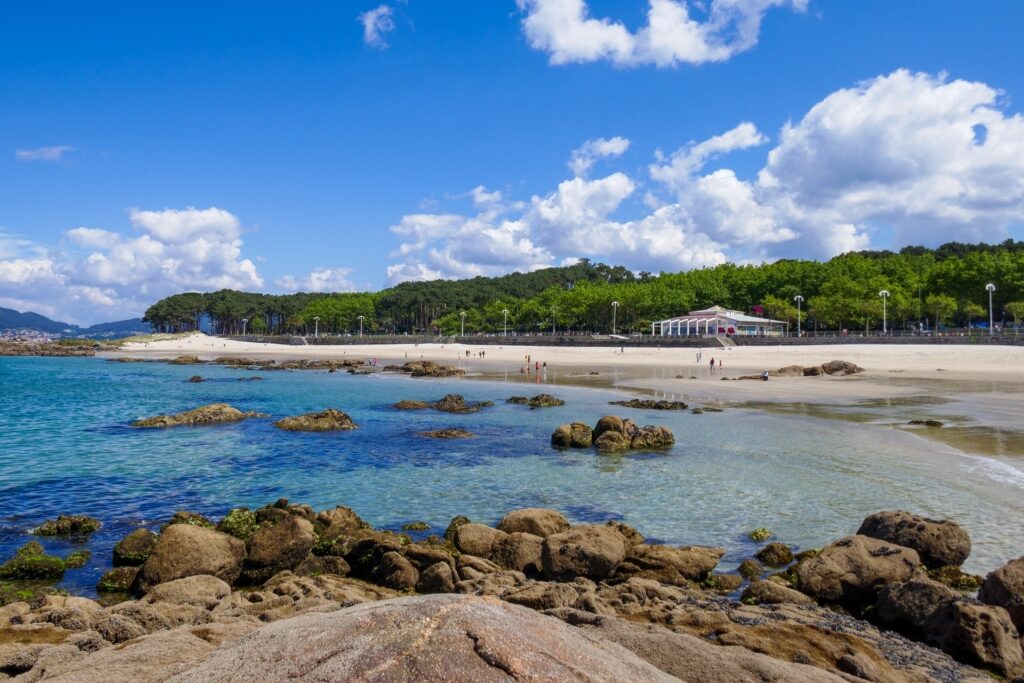
Praia de Samil
If you haven’t got time for a day trip to the Cíes Islands but want some beach time, head for Praia de Samil. This long swathe of pale gold sand to the south of the city is a popular spot with locals.
You’ll find everything here from saltwater pools to beach volleyball and the tapas bars that Spain is known for.
Cathedral Santiago de Compostela
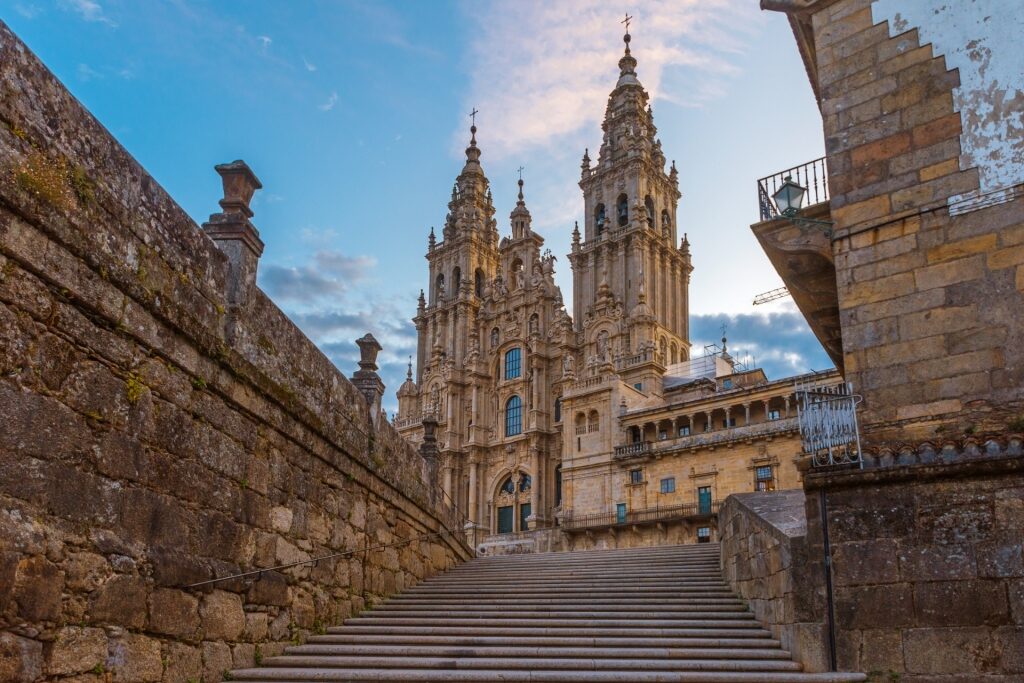
Cathedral Santiago de Compostela
The lovely old university city of Santiago de Compostela, Galicia’s capital, represents the end of the Camino de Santiago, one of the world’s most famous pilgrimage trails. The Camino brings some 350,000 faithful a year, on foot, to the shrine of St. James, which is housed in the ornate Cathedral Santiago de Compostela.
The cathedral dominates the center of the honey-colored medieval city. Originally Romanesque, it’s been added to over the years and is most notably baroque in style, with elaborate bell towers and multiple statues of St. James. The scallop shape you’ll see everywhere is the most significant symbol of the Camino.

Pórtico de Gloria Photo by Contando Estrelas on Flickr, licensed under CC BY-SA 2.0
You could spend hours just gazing at the elaborate Pórtico de Gloria, the original medieval facade, but further treasures await.
You’ll see pilgrims paying their respects at the High Altar, and descending into the Crypt, where the bones of the saint are kept. For many, this is a deeply spiritual experience and the culmination of many days of walking.
More prosaically, you could join a tour to climb to the cathedral’s roof, Las Cubiertas, for sweeping views over the city and the upper parts of the cathedral itself.
Soutomaior Castle
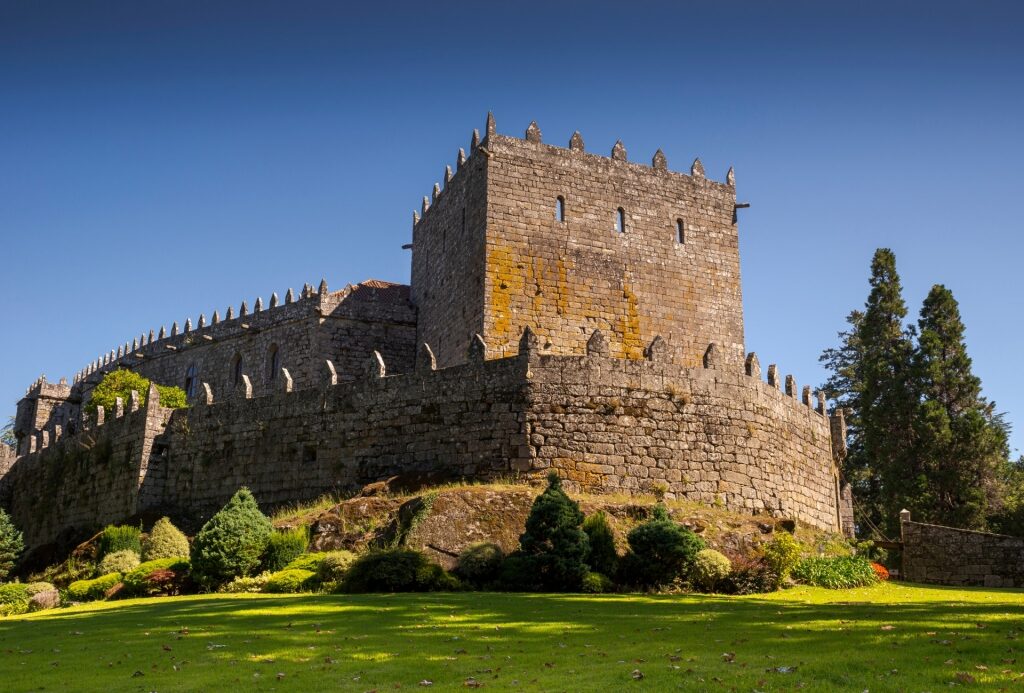
Soutomaior Castle
A short drive from the city, this palatial castle slumbers amid vast grounds. Dating back to the 12th century, the Spanish castle is a crenelated confection with graceful gothic arches, a squat tower, and chunky walls.
Inside, a high-tech museum whisks you through the building’s history; there’s even a section dedicated to the 15th-century nobleman Pedro Álvarez de Sotomayor, who some believe to be the actual Christopher Columbus.
The exhibition is fun for kids, as it really brings history to life, so do consider Soutomaior as a family excursion from Vigo.
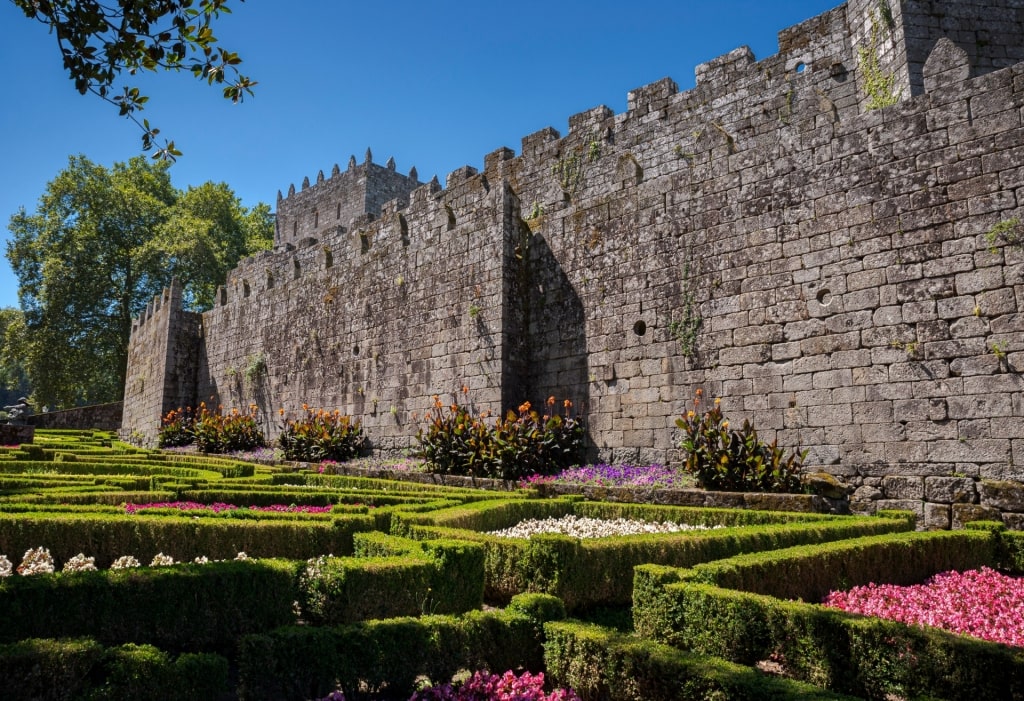
Exterior of Soutomaior Castle, Vigo
After your visit, stroll under ancient cedar and sequoia trees and through oak forest; there’s even a vineyard on the grounds.
Food & Drink
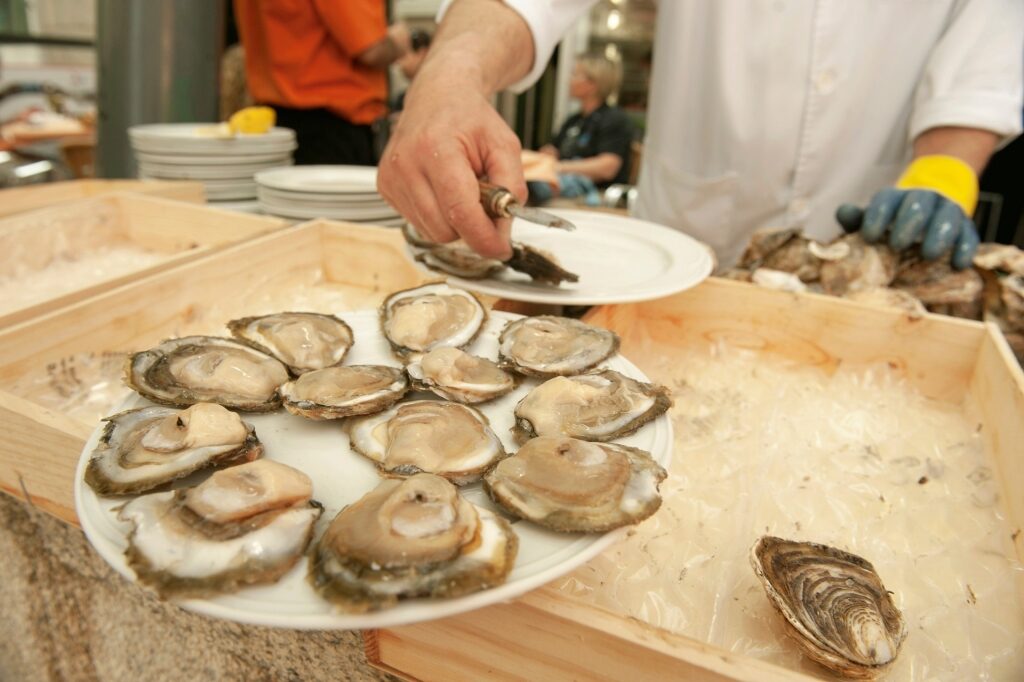
Oysters
You’ll find seafood at every turn in Vigo. You’d have to be in town early to catch the action at the Mercado de Pedra, where the night’s catch is sold, but there are ample opportunities to taste the freshest seafood imaginable.
Every day, along the Rúa da Pescadería, near the waterfront, you’ll see oysters for sale, fresh from the sea and set up on granite tables. Be sure to get there before 3 pm.

Polbo á feira
Head to the tapas bars in the old fishing quarter of Bouzas and feast on grilled octopus, razor clams, grilled sardines, and chinchos (small, grilled fish).
Polbo á feira is the specialty to look out for; boiled octopus is drizzled with olive oil and sprinkled with salt and paprika. Try Taberna Patouro for authentic Galician dishes.
Other Vigo specialties include empanadas de Zamburiña, baby scallops in a pastry case, decadent lobster rice, and padrón peppers, delicious when grilled with olive oil and salt.
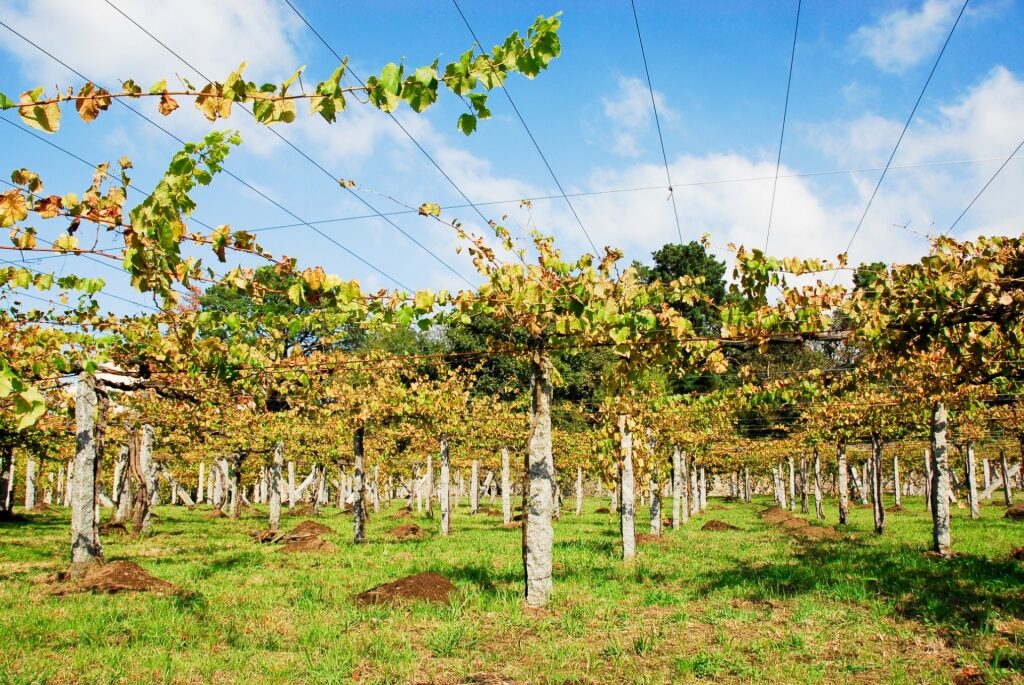
Vineyard in Galicia
All this is washed down with a glass of albariño, the aromatic white wine that’s produced in Galicia. If you’d like to know more about albariño and other Galician wines, you could join a tasting tour to some of the wineries near the city.
Best Time to Visit Vigo
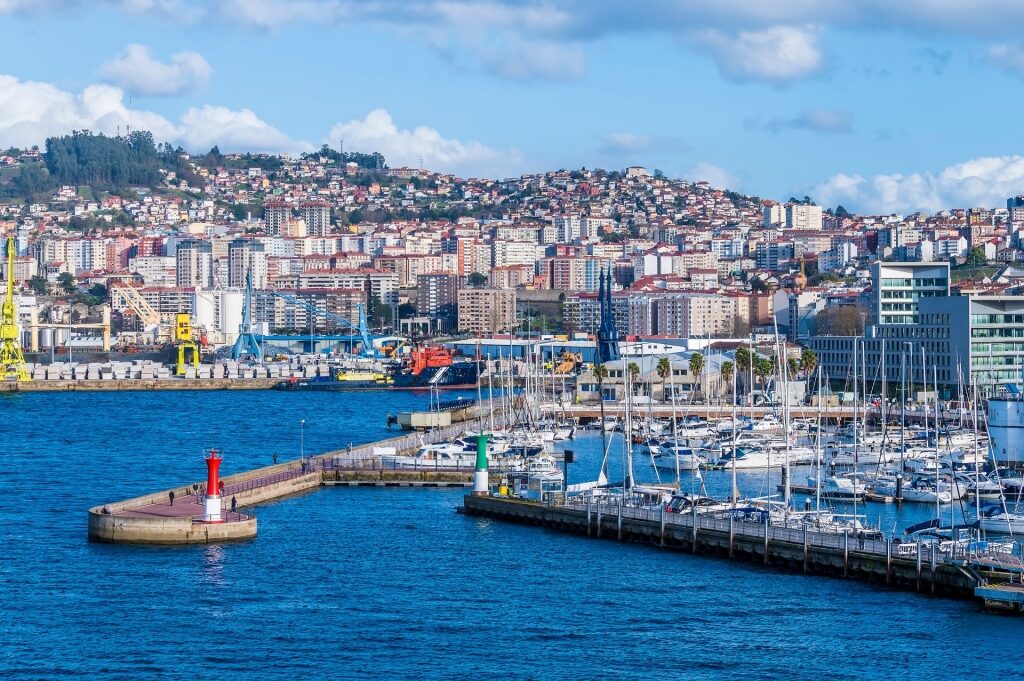
Vigo
Vigo is really a summer destination, at its best between May and October. Temperatures are considerably cooler than in southern Spain, although you should still enjoy average highs of around 75 degrees Fahrenheit in August.
You may encounter the odd rain shower or mist in spring or fall in Spain, but generally, the weather is fine. Winters, on the other hand, are cool and wet.
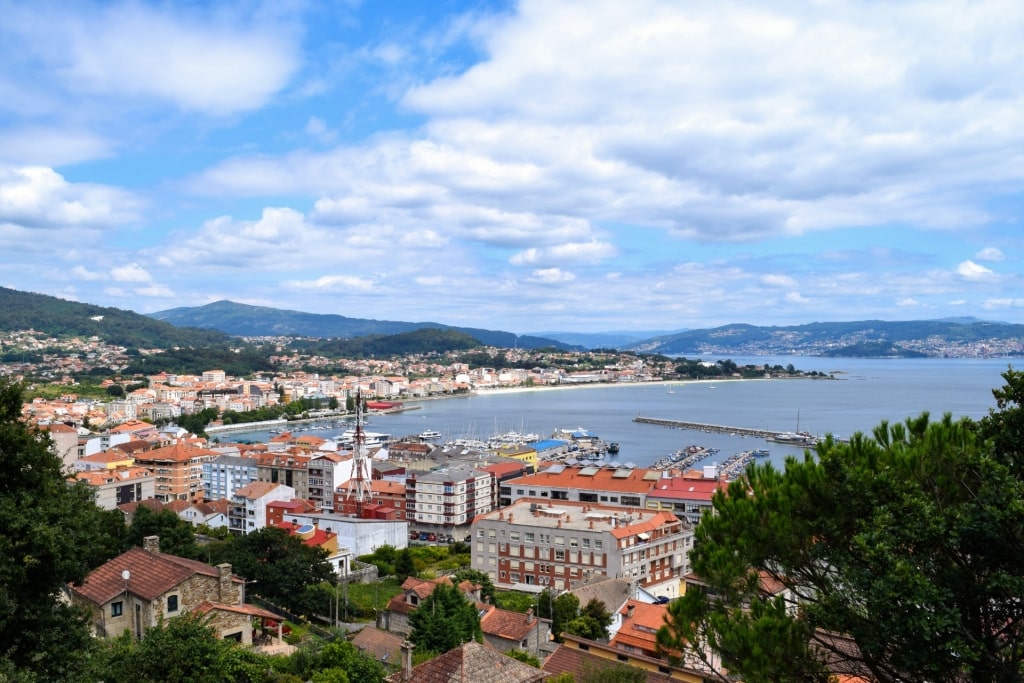
Vigo
Would you like to discover more of this enchanting corner of Spain? Browse our cruises to Vigo and book your next European adventure with Celebrity Cruises.
